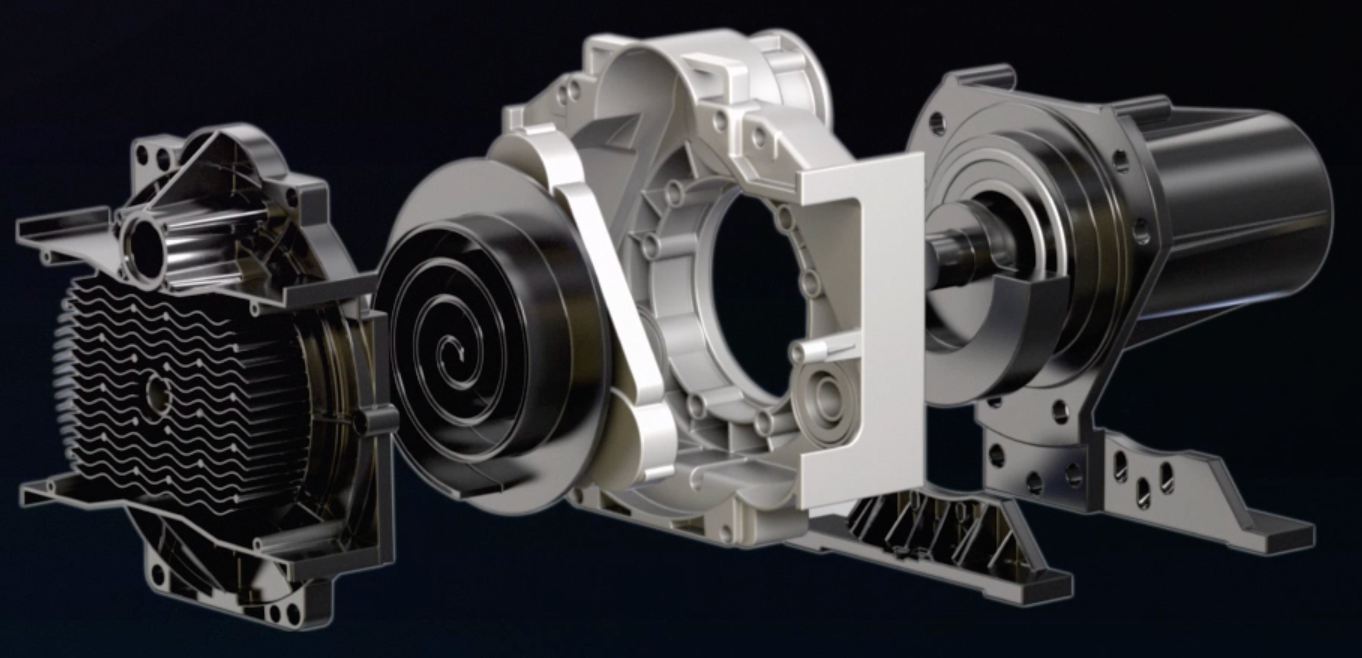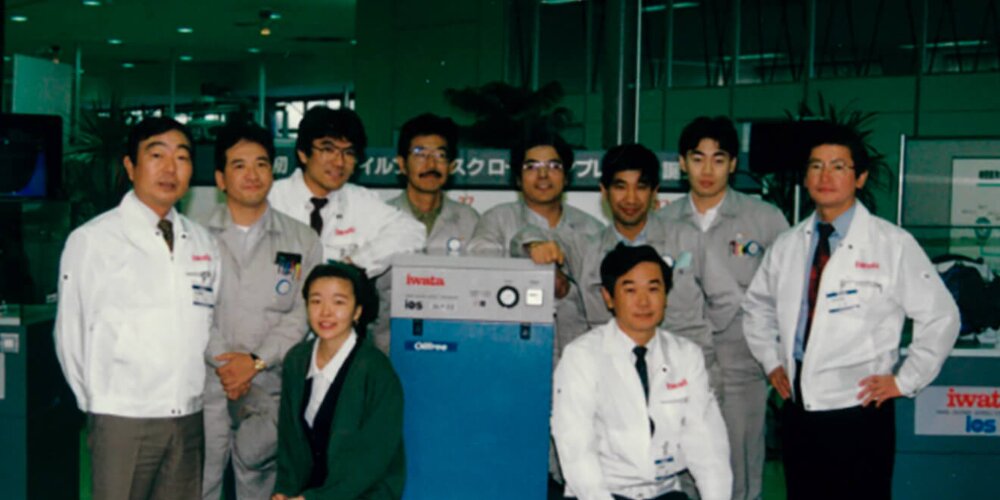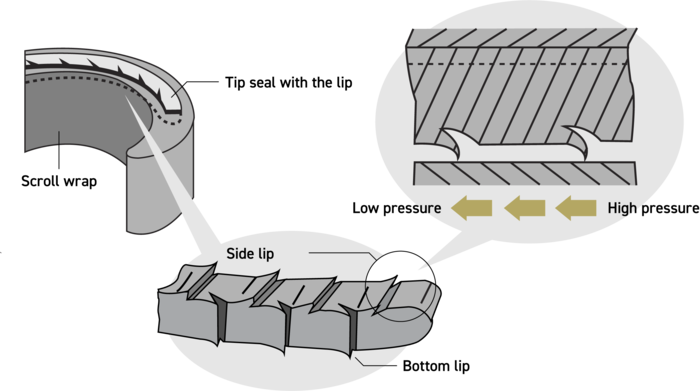
First developers of oil-free scroll compressors worldwide
Let's hear what the pioneer of scroll technology has to say about his experience: Mr. Sato Kazuaki, who works as an engineer in Anest Iwata's Advanced Technology Laboratory, will tell us what he has seen behind the scenes, from the first day of the project until today.
What was your vision when the company decided to develop a scroll compressor? Why was the scroll mechanism chosen over all others?
At that time, an oil-free compressor was not the first choice for a common industrial application. The reason for this was the higher price, limited functionality and short service life. Nevertheless, Anest Iwata was determined to invest in an oil-free compressor to stand out from the competition. With "oil-free" as a goal, we had some challenges to overcome because we wanted our product to offer something different. It had to be quiet, low vibration and small. The development of the scroll pump began because it offered more possibilities than any other pump in use at the time. When the project started, we saw the scroll pump as just a valuable "option." At that time, we didn't even realize its true potential. The more we looked into the mechanism, the more we were convinced that the scroll was the solution. First of all, there is no oil in the oil-free machine. For this reason, there are only two options for the choice of sealing material. Either a non-contact seal, which operates in a very tight clearance, or a durable contact seal. With the non-contact seal, air leakage from the clearance is more of a challenge, and with the contacting seal, seal wear is more critical.
When the orbiting part of the scroll moves against the fixed part, several crescent-shaped air pockets are created, which are accompanied by a number of non-contact seal lines to the right and left of the pump. The distance between each seal line is about the thickness of a hair. The incoming air travels through an increasingly narrow space and finally reaches the center. The pressure difference between the air pockets is kept to a minimum, which contributes to stable compression.
How did you cope with all the challenges?
At the time, there wasn't much we could look up, so we basically made our moves almost blindfolded. The most difficult challenge was to create the circular motion unique to the spiral. Back then, this was considered unachievable with an oil-free machine, but we did it because we invented the world's first precision crankpin mechanism. We added another important step to our process to adjust the clearance of the spirals. These were the two most important milestones we set on the way to oil-free operation. The next step was the tip seals. The tip seal is a contacting seal and its main function is to trap the pressurized air. In the case of the oil-free pump, where there is no oil seal, we had to try many different materials. Most of them gave poor results and wore out quickly. In order to improve both the functionality of the seal and the efficiency of the compression, we developed tons of prototypes. When we concluded that we had exhausted all possibilities and ideas, we had the idea of adding small incisions to the seal, which we now call "lips". They were placed on the side and bottom of the seal, just a few millimeters apart. When compression began, the lips stood up like fish scales. The reason for this is the difference in pressure between the lips. After this achievement, the sealing effect was drastically improved and the tip seal had proved its compression efficiency. Regarding the problem of the wear and tear of the material, we have worked closely with the supplier of the seals. Together, we conducted many durability tests and developed several prototypes with different types of resin during this testing phase. We examined each case to find the optimum roughness of the surface. The durability tests were performed several times under strict conditions. After all these tests, we achieved a durability of 10,000 hours.
What was the most difficult aspect of this project?
If I choose the most difficult challenge, it was the deadline. The original time frame we had been given for the project had long since passed, as five years had now gone by. At that point, we were almost ready to take production of the scroll to the commercial level, but from an engineering standpoint, there were some uncertainties that I couldn't ignore. We were facing the second deadline and had to make a decision. Our project team discussed many times and in the end we decided to extend the project for another year. We conducted one evaluation after another, solving all the challenges each time and taking one step at a time. It was great that we could take time for the evaluation, because no customer complained about the functionality of the scroll after it was launched. Our products have proved their value and gained the trust of customers.
*Statement is based on our own study on the industrial oil free scroll compressor larger than 0.75kW




